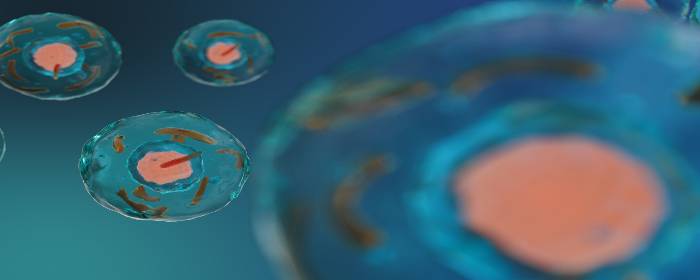
by admin | May 13, 2019 | Mesenchymal Stem Cells, Stem Cell Research, Stem Cell Therapy
Erectile dysfunction is the most common sexual disorder among men. During an erection, blood enters the tissues within the penis and is temporarily trapped there. In erectile dysfunction, however, this process does not occur. A man who suffers from this condition is unable to achieve a penile erection sufficient for sexual intercourse.
Erectile dysfunction has many causes ranging from neurological conditions to vascular (blood vessel) conditions to psychological conditions. In most men, erectile dysfunction is caused by a problem in blood flow and nitric oxide production, which is why drugs like the Viagra and Cialis are effective for some men because they temporarily reverse these problems.
Results from a review of 54 research studies showed that stem cell-based therapies may be able to reverse these effects on a more permanent basis. For example, mesenchymal stem cells were able to increase the number of enzymes that produce nitric oxide. Likewise, mesenchymal stem cells increased the size of penile tissue in older rats. Indeed, stem cell injections were able to restore erectile function in rats with diabetes.
Based on these laboratory results, researchers have conducted clinical trials using stem cells to treat men with erectile dysfunction. In one such trial, researchers used a person’s own fatty tissue (adipose) to generate stem cells. They then injected those cells into men with erectile dysfunction. Eight out of 11 men treated with stem cells regained erectile function. In another small study, eight men with profound erectile dysfunction in whom oral ED treatments failed received placenta-derived stem cells. Two of the patients were able to achieve and sustain erections six weeks after treatment while an additional patient was able to do so after three months.
Laboratory studies of stem cells in the treatment of erectile dysfunction are extremely promising. The clinical studies in this area are limited, and the results are somewhat less impressive. Nonetheless, as improvements and refinements are made to stem cell technology, this approach could offer hope to men with erectile dysfunction, especially those men who have not been helped by ED drugs.
Reference: Albersen, M. et al. (2013). Stem-cell therapy for erectile dysfunction. Arab Journal of Urology. 2013 Sep; 11(3): 237–244.

by admin | May 10, 2019 | Stem Cell Therapy
While arthritis is a chronic condition for which there is no cure, certain dietary changes can help to alleviate its symptoms by reducing inflammation, improving bone strength, and boosting the immune system. Following the anti-inflammatory arthritis diet recommended by the Arthritis Foundation Discover could help you control your joint pain and stiffness, along with other therapies. Discover which foods to prioritize, and just as importantly, which to avoid, in honor of National Arthritis Awareness Month this May.
The Anti-Inflammatory Arthritis Diet
Although there is no prescriptive diet recommended for people with arthritis to follow exclusively, the low-inflammatory Mediterranean diet has been shown in numerous studies to reduce pain and increase physical function in certain types of arthritis, including Rheumatoid Arthritis (RA). The Mediterranean diet emphasizes vegetables and fish, along with olive oils and other foods that can help control inflammation. Here are a few foods to consider eating regularly:
- Fish: Salmon, tuna, sardines, and other cold-water fish have high concentrations of omega-3 fatty acids, which are known for fighting inflammation.
- Colorful Fruits & Vegetables: Packed with antioxidants which support a healthy immune system and may combat inflammation, heavily pigmented produce like blueberries, blackberries, cherries, spinach, broccoli, and kale are great foods for filling your plate and snacking between meals.
- Nuts & Seeds: Monounsaturated fats found in pistachios, almonds, pine nuts, and walnuts are excellent for reducing swelling in the joints. Plus, they’re filled with fiber to help keep you full.
- Beans: Varieties like pinto, black, and garbanzo beans have both antioxidants and anti-inflammatory compounds, along with a high dose of powerful vitamins and minerals.
- Olive Oil: A perfect addition to salad greens, extra virgin olive oil is minimally processed and a heart-healthy source of fats. It also contains oleocanthal, a compound known for reducing pain and inflammation.
3 Inflammation Triggers to Avoid or Minimize
While eating inflammation-fighting foods can help reduce swelling and pain in the joints, it’s important not to counteract the effects of your healthy dietary choices with foods known to trigger inflammation. Here are a few foods to avoid or have sparingly:
- Added Sugars: Unlike the natural sugars found in the fruits listed above, processed sugars can spur the release of cytokines, the body’s inflammatory messengers. Avoid any packaged or prepared foods with ingredients ending in “-ose” on the label.
- Saturated Fats: These fats are known for aggravating arthritis inflammation. Full-fat dairy, red meat, pasta, pizza, and many desserts are high in saturated fat, so try to reduce your consumption of these foods for better arthritis management.
- Trans Fats: Meat and dairy contain trace amounts of trans fat, but it’s mostly found in foods as a result of a process that adds hydrogen to vegetable oil. Not only does this dangerous fat raise “bad” cholesterol levels, but it can also trigger inflammation. Steer clear of margarine, nondairy creamer, fried foods, and chips and baked goods with trans-fat.
While making dietary modifications to improve arthritis symptoms may seem daunting at first, the changes are worth making. Not only do the suggestions above help to control pain and swelling in the joints, but they can also contribute to a healthier lifestyle overall. If you’re considering an arthritis diet, consider speaking with your doctor about the best dietary choices to benefit your specific condition.

by admin | May 3, 2019 | ALS, Mesenchymal Stem Cells, Stem Cell Therapy
Amyotrophic lateral sclerosis or ALS is a neurological disease that causes muscle weakness, profound disability, and ultimately death. ALS is sometimes referred to as Lou Gehrig’s disease, named for the New York Yankee baseball player who developed the condition later in his life. Notably, physicist Stephen Hawking long suffered from the condition.
ALS affects the nerves that control movement. As nerve cells become dysfunctional and die, a person’s muscles become weak. The disease often starts with weakness in one part of the body before moving to other parts. In 4 out of 5 people with ALS, the first symptom is a weakness of one limb but not the other. Over time, however, the disease spreads to virtually all motor neurons (nerve cells) in the body. Eventually, patients are unable to walk because of muscle weakness and are usually confined to a wheelchair. The condition becomes particularly difficult to manage and potentially life-threatening when it starts to affect lung muscles, which make it hard for patients with ALS to breathe.
There is no cure for amyotrophic lateral sclerosis. For the most part, however, treatment for ALS focuses on reducing the symptoms of the condition rather than treating it. Patients often undergo intensive physical, occupational, and speech therapy regimens to help manage symptoms of ALS. Physicians may prescribe drugs to reduce muscle spasms, sleep problems, and pain associated with the condition. Researchers are constantly looking for ways to improve ALS treatment.
Dr. Petrou and co-authors recently reported clinical trial results in the highly regarded medical journal, JAMA Neurology. The researchers started their research by altering mesenchymal stem cells in the laboratory so that they produce neurotrophic growth factors. In other words, they engineered stem cells to release substances that help nerve cells grow and survive. Then they tested these stem cells in two clinical trials. In the first clinical trial, the doctors used these stem cells to treat six patients with early-stage ALS and six patients with advanced ALS. In the second clinical trial, they tested the stem cells in 14 patients with early-stage ALS.
All patients in both trials tolerated the stem cell treatments very well. There were no serious side effects related to treatment. 87% of the patients responded positively to treatment, which means they showed at least 25% improvement in physical function and/or lung function. These positive results from stem cell treatment are particularly impressive because ALS gets worse over time. Patients generally either stay the same or get worse—it is quite unusual for them to get better. Encouraged by these results, the researchers who worked on this study will now confirm these results in larger clinical trials. The hope is that this stem cell treatment will be available for patients with ALS in the coming years.
Reference: Petrou P. et al. (2016).Safety and Clinical Effects of Mesenchymal Stem Cells Secreting Neurotrophic Factor Transplantation in Patients With Amyotrophic Lateral Sclerosis: Results of Phase 1/2 and 2a Clinical Trials. JAMA Neurology.2016 Mar;73(3):337-44.

by admin | Apr 30, 2019 | Hyperbaric Oxygen Therapy, Stem Cell Research, Stem Cell Therapy, Traumatic Brain Injury
Traumatic brain injury (TBI) encompasses a wide range of injuries, neurological problems, and outcomes. On one end of the spectrum is a concussion, which can be mild and short lasting. At the other end of the spectrum, traumatic brain injury can be lethal or leave patients with chronic mental and physical problems. Despite this range of severities, traumatic brain injury is one of the leading causes of disability in the United States, affecting over 13 million people. People who suffer from chronic symptoms related to traumatic brain injury may struggle with chronic seizures, memory problems, concentration problems, agitation, among others. TBI can have profoundly worsened a person’s quality of life and overall well-being.
Unfortunately, little can be done to treat traumatic brain injury directly. Aside from treating symptoms, the main treatment for TBI is to have the patient to rest and avoid stimulation in an effort to give the brain time to heal. Patients can regain some function through intensive work with physical, occupational, speech, and recreational therapist. However, the brain’s ability to heal itself is limited compared to other tissues of the body. In short, the brain has very little capacity to make new brain cells after we are born. So once TBI has occurred, patients either need to depend on other healthy areas of the brain or simply adapt to their circumstances.
Fortunately, researchers are finding ways to improve on nature through hyperbaric oxygen therapy. Drs. Shandley, Wolf and other hyperbaric medicine researchers recruited a group of 28 military veterans who sustained a traumatic brain injury in Iraq or Afghanistan. These individuals had ongoing cognitive problems as a result of their brain injuries. Researchers placed some study participants in 2.4 atm avoid hundred percent oxygen, while the others simply underwent a placebo experience at basically normal pressure and oxygen levels. The two groups underwent 30 exposures each and took a cognitive test before and after these treatments.
Hyperbaric oxygen therapy increased the number of stem cells in the blood of patients with TBI. In other words, hyperbaric oxygen treatment was able to move stem cells from the bone marrow and perhaps other tissues into the bloodstream. At the same time, those treated with hyperbaric oxygen performed better on tests of cognition including ImPACT, BrainCheckers, and PCL-M test. Moreover, no adverse effects of treatment were observed. Taken together, these results suggest 30 sessions of hyperbaric oxygen treatment at 2.4 atm was able to increase stem cells in the blood and improve cognition in US warfighters who suffered traumatic brain injury during combat. These results are encouraging news for the millions of veterans and nonveterans who sustained a traumatic brain injury every year.
Reference: Shandley, S. et al. (2017). Increased circulating stem cells and better cognitive performance in traumatic brain injury subjects following hyperbaric oxygen therapy. Undersea & Hyperbaric Medical Society. 2017 May-Jun;44(3):257-269.

by admin | Apr 24, 2019 | Exosomes, Mesenchymal Stem Cells, Stem Cell Research, Stem Cell Therapy
Duchenne muscular dystrophy is a degenerative condition that is hereditary caused by mutations to a gene called dystrophin. The condition affects both skeletal and cardiac muscles, impairing physical mobility and leading to weakened heart and respiratory functioning. Current treatments for Duchenne muscular dystrophy aim to control the symptoms of the condition and enhance the quality of life, but there is no known cure.
Given the need for effective therapies in Duchenne muscular dystrophy and the success of stem cells in treating other degenerative conditions, research has begun to focus on how cell therapies may be able to help Duchenne muscular dystrophy patients. Mesenchymal stem cells have been considered as an approach to this form of therapy.
Much of the research to date has emphasized autologous sources of stem cells that come from the patient themselves – such as from bone marrow or adipose tissues. However, a recent study, published in Biomaterials, investigated the impact of allogeneic mesenchymal stem cells – which comes from someone other than the patient – on Duchenne muscular dystrophy. Specifically, the researchers looked at the therapeutic effects of placenta-derived mesenchymal stem cells.
The scientists found that using placenta-derived mesenchymal stem cells may be able to reduce the amount of scarring and thickening of the connective tissue of the cardiac muscles and diaphragm in Duchenne muscular dystrophy while also minimizing inflammation. These promising findings demonstrate the potential to use stem cells to reverse the pathology of Duchenne muscular dystrophy and not just to address the symptoms. Future research will help to determine if regenerative therapy could have a meaningful impact on the course of this condition.
Reference: Bier et al. 2018. Placenta-derived mesenchymal stromal cells and their exosomes exert therapeutic effects in Duchenne muscular dystrophy. Biomaterials, 174, 67-78.

by admin | Apr 20, 2019 | Cannabinoid, CBD, Multiple Sclerosis, Stem Cell Therapy
Four out of five people with multiple sclerosis experience muscle spasticity. Muscle spasticity causes increased muscle tone, uncontrollable muscle contractions, and spasms. Like severe muscle cramps, muscle spasticity can be quite painful and is one of the most troubling symptoms of multiple sclerosis. Despite being so common and so troublesome, multiple sclerosis patients with muscle spasticity have few effective treatments options. In many cases, the muscle spasticity continues even after treatment with drugs such as baclofen or tizanidine. Not only are these drugs largely ineffective, in many cases they cause substantial side effects.
Marijuana has long been known to exert a muscle relaxing (anti-spasmodic) effect. As medical marijuana is becoming legal in more jurisdictions, researchers are now carefully studying the effects of the substances within marijuana. One important example is a study conducted by Spanish researchers. In 2010, Spanish drug authorities approved the use of an oral spray that contains a combination of delta-9-tetrahydrocannabinol (THC) and cannabidiol (CBD), two active substances found in marijuana (Cannabis sativa). Spanish authorities approved the use of this drug for multiple sclerosis patients with moderate to severe muscle spasticity who did not benefit from other antispasmodic drugs.
Dr. Lorente Fernández and other Spanish researchers were interested in learning whether this combination of THC and CBD was able to help multiple sclerosis patients with severe muscle spasticity. The scientists found that the combination of substances found in medical marijuana was effective in 80% of patients they examined. What is striking about this finding is that every patient included in this study had failed to find relief from other medical treatments of spasticity. In other words, they had difficulty in treating muscle spasticity. When viewed in those terms, an 80% effectiveness rate is extremely impressive.
Some patients withdrew from treatment because they felt that THC/CBD did not help them within the first 30 days of starting treatment or some experienced dizziness or weakness.
Muscle spasticity is one of the most common, most troubling, and most difficult to treat symptoms of multiple sclerosis. While traditional medical treatments often fail, the substances in medical marijuana may offer hope. This study illustrates that 4 out of 5 multiple sclerosis patients with difficult to treat muscle spasticity achieved relief from a combination of THC and CBD, substances found in medical marijuana.
Visit our website for available hemp extract products. Click here
Reference: Lorente Fernández et al. (2014). Clinical experiences with cannabinoids in spasticity management in multiple sclerosis. Neurologia. 2014 Jun;29(5):257-60.







 St. Petersburg, Florida
St. Petersburg, Florida
